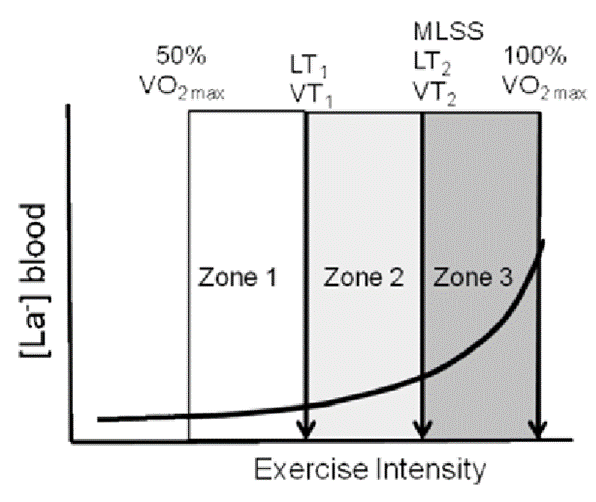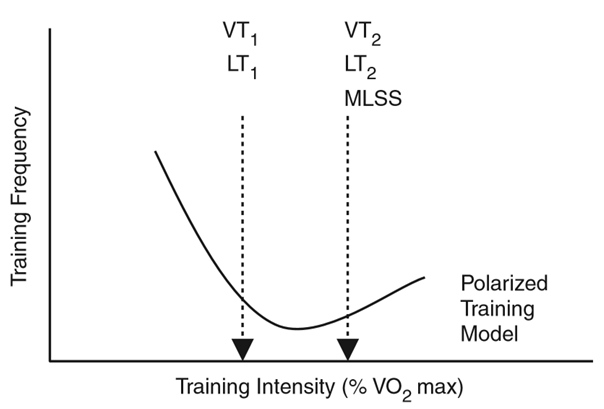After the previous blog posts made it clear that VO2max is one of the three main factors of endurance performance and then explained what is meant by this term, this post will now show how the maximum oxygen uptake can be increased through training.
In order to effectively increase this parameter, the training volume, the training ranges and, at the same time, the distribution of these ranges have become decisive.
Training volume
With regard to the amount of training, it can be stated that a positive development of VO2max can only be achieved over a longer period of time if the organism regularly experiences appropriate stimuli. The basis is therefore a chronic performance of extensive endurance training. Conversely, it is clear that too low an oxygen metabolic rate is not sufficient to increase VO2max, let alone maintain it.
The maximum possible training volume is limited somewhere. On the one hand, this is due to physical factors. For example, too high an energy metabolism over a longer period of time leads to the breakdown of protein structures and can result in so-called overtraining. In addition, the passive structures of the musculoskeletal system also reach the limits of their capacity at some point and thus also determine the maximum possible training volume. Overload damage or injuries are often the resulting unpleasant examples if the bow has been stretched too far in this respect. On the other hand, the maximum possible training volume also depends on the athlete’s daily programme.
Distribution of training intensity
In view of these limitations and in an effort to find the most efficient training design possible, sports science research has also been concerned with the distribution of training intensity. The three-zone model has become internationally accepted for determining training zones, e.g. The Norwegian Method.

These zones can be further differentiated and expanded accordingly. In addition, the naming of intensity zones is often done differently in different sports. Based on the three-zone model, the investigations focused on the percentage distribution of training time in the respective zones. It was found that a large part of the training was done in zone 1. 80-90% of the training time was spent at low intensity and is referred to as “low intensity training, LIT”. The proportion of training time for world-class athletes was negligible in zone 2, only to reach 10-20% again in zone 3.
The term for training in zone 3 is consequently “high intensity training, HIT“. For the individually correct determination of the training intensity zones, professional performance diagnostics should again be the means of first resort. The importance of training in zone 2 and the goals and times at which this can still be advisable will be discussed in later blog posts.

Polarised training
This distribution is called a bipolar training approach. Research studies comparing e.g. threshold training with a bipolar training approach also showed a higher increase in VO2max with the latter and thus support the tendency towards it.
From a physiological point of view, polarised training can probably be justified by the signalling cascades of AMPK and CaMK. Both the activation of AMPK and CaMK activate the protein PGC-1α. This in turn is thought to be the “master switch” in supporting the development of an aerobic muscle phenotype.
In further blog posts, some athletes and coaches present HIT and LIT units that are popular with them.
References:
- Joyner & Coyle, 2008
- Laursen, 2010
- Mader & Heck, 1991
- Seiler, 2006
- Seiler, 2010
- Stöggl & Sperlich, 2015
- Tønnessen et al., 2014